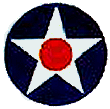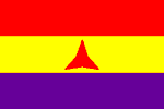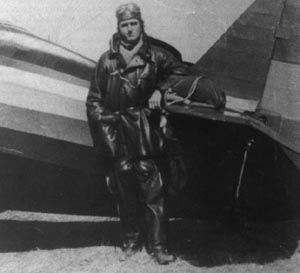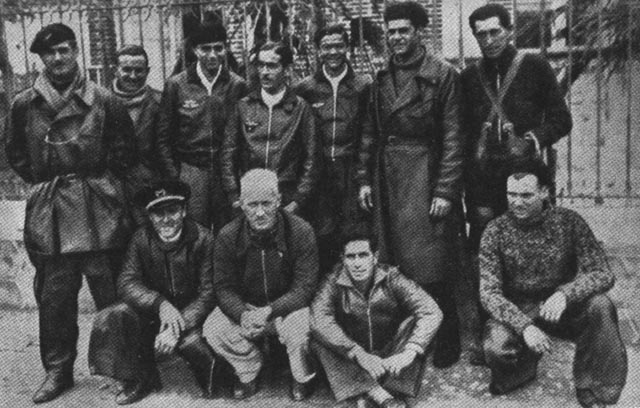United States of America


Frank Glasgow Tinker Jr
United States of America


Frank Glasgow Tinker Jr

14 July 1909 - 13 June 1939
Tinker was born on 14 July 1909 in Kaplan, Louisiana.
In his early years his family moved to DeWitt, Arkansas.
He enlisted in the Navy in 1926 and was appointed to the US Naval Academy in 1929.
He graduated with the class of 1933, earning a B.S. degree in business.
Because of the Great Depression, he could not be commissioned right away and Tinker along with many of his classmates enlisted in the Army Air Corps as flying cadets and was assigned to Randolph Field, Texas for flight training.
On 29 May 1934, he was finally commissioned to a Navy Ensign.
He then received flight training at Pensacola, Florida.
With the flight training behind him, Tinker drew an assignment to the cruiser USS San Francisco to fly reconnaissance floatplanes.
His naval career ended when he got into several brawls. The Navy dissolved his commission in 1935 and he was out on the street. Tinker then signed up as a Third Mate on a Standard Oil Tanker working in the Gulf of Mexico.
He volunteered for service in the Spanish Civil War on the Republican side and used the nom de guerre Francisco Gómez Trejo.
By February 1937, capitán Ramón Puparelli Francia was well enough (he had been wounded in combat on 21 October 1936) to be given command of the first two Spanish I-15 escuadrillas. The short-lived grupo was named Grupo de Caza No 16 but both escuadrillas were to operate virtually independently.
Andrés García La Calle was put in command of the 1a Escuadrilla. Initially it comprised three elements. The 1a Patrulla consisted of La Calle, José Calderón, Ramón Castañeda di Campo and Ben Leider, the 2a Patrulla comprised of Jim Allison, Tinker, Harold Dahl and José ‘Chang’ Sellés and the 3a Patrulla was made up of Luis Bercial, Esteban Ortiz, José Riverola Grúas and Gerardo Gil Sánchez (who joined the unit on 10 February).
Capitán Roberto Alonso Santamaría took command of the new second Spanish I-15 escuadrilla, the 2a Escuadrilla, which was established at Los Alcázares and San Javier. From there they moved to El Soto airfield, again on the Madrid front. The new escuadrilla comprised tenientes Rafael Robledano Ruiz, Juan Comas Borrás (posted in late February), Antonio Blanch Latorre, Ricardo Rubio Gómez, Mariano Palacios Menéndez, Ángel Álvarez Pacheco, Justo García Esteban and Hipólito Barbeito Ramos, sargentos Manuel García Gascón, Alfonso Calvo Ortiz, Cándido Palomar Agraz and Rafael Magriña Vidal and Uruguayan teniente Luis Tuya.
On 7 February, the 1a Escuadrilla moved to the old Hispano-Suiza aerodrome in Guadalajara. They began operations at El Jarama, where their activities were outstanding, but their losses heavy; José Calderón, Ben Leider and Luis Bercial were killed, while Jim Allison and Harold Dahl were shot down but survived.

In the afternoon on 16 February, 24 CR.32s flew close escort to Ju 52/3ms out to bomb Arganda del Rey. Polikarpov I-15s intercepted them from behind and above. The Republican fighters didn’t attack the Nationalist aircraft but over the target three I-15s broke formation and raced towards the bombers. Before the escort could intervene, one Ju 52/3m bomber flown by a Spanish crew was shot down. Banking sharply to the port, Tenente Enrico Degli Incerti intercepted the leader of the I-15s and opened fire. This prompt action caused the enemy pilot to discontinue the attack, but as he tried to evade Degli Incerti, he presented an excellent target. Degli Incerti saw his bullets disappearing in the I-15s fuselage and he remained behind it, sending burst after burst into it until it began to burn. He then followed it down until it hit the ground. The shot down I-15 was also as confirmed by observers from the tri-motor formation.
It seems that Sergente Maggiore Silvio Costigliolo claimed a I-16 during the same mission since he claimed one of Russian monoplanes (reported as a ‘Boeing’) south of Arganda, during an escort mission of Junkers Ju 52/3ms and IMAM Ro.37 bombers.
I-16s from Escuadrilla Tarkhov also took part in this interception when Leitenant Andrei Morozov and Leitenant Petr Khara claimed a CR.32 each and leitenant Sergey Denisov claimed a Ju 52 3/m.
It seems that Tinker of the Escuadrilla La Calle was shot down during this combat.
One Nationalist Ju 52 3/m was lost with its Spanish crew; capitán Jose Calderon Katseli, tenente Francisco Taillefer and sargento Felipe Rojas Gomez were killed while the other two crew members were captured.
On 14 March, Tinker took off in an I-15 (CA-056) from Guadalajara. During the two-hour mission he claimed one CR.32 before landing at Valencia.
A second CR.32 was claimed as a shared by capitán Alonso Jiménez Bruguet and Vladimir Puzeikin over Trijueque in the Guadalajara area.
On 20 March, the 1a Escuadrilla (”Escuadrilla La Calle”) took part in the last aerial combat during the battle of Guadaljara. They took off in four patrols, led by Andrés García La Calle, Harold Dahl, Tinker (CA-056) and the Guatemalan pilot Miguel García Granados, and were soon involved with three bombers and 20 Fiats. Granados patrol was jumped by the Fiats, which had been patrolling in a higher altitude, and in the first hail of bullets Granados was shot down. Tinker gained his second victory at 17:00 (M. Scala KIA?), and from the two squadrons of fighters taking part five Fiats were destroyed.
The Italians reported that a patrol of four Fiat fighters under the command of Capitano Mario Viola had taken off from El Burgo de Osma in the afternoon and subsequently bounced two I-15s flying at low altitude in the vicinity of Almadrones. Sergente Maggiore Brunetto di Montegnacco shot one of the aircraft down in flames in spite of his opponent’s violent evasive action, the pilot taking to his parachute and being captured. Montegnacco’s victim was Miguel Garcia Granados, who suffered burns to his face and one hand and he was captured (he later returned in a prison exchange).
Granados (1896-1968) was a former Colonel in the Guatemalan Air Force who had done a famous goodwill flight in 1929 from Washington DC to Guatemala. He had previously commanded the Guatemalan air force, with the rank of colonel, between 1930 and 1933. He had also served with the Paraguayan Air Force in the Gran Chaco War.
On 17 April, the three Nationalist He 51 escuadrillas operated over the Teruel front with a total of 17 fighters.
2-E-2, with five He 51s, saw an enemy bomber but was unable to close with it. Shortly after they were joined by another He 51, flown by teniente Jaime Palmero Palmeta, and caught sight of ten I-15s patrolling well above their own altitude of 4,000m. They climbed to attack, determined to break off at the moment of interception, but teniente Palmero was unable to evade one I-15 that was coming down very fast in a dive, and the two machines collided. The ensuing combat ranged all over the sky, and ten more I-15s and a third fighter squadron soon joined the battle against the five remaining aircraft of 2-E-2. Capitán Ángel Salas Larrazábal made attacks on four aircraft but didn’t claim anything and arrived at Calamocha with his petrol tanks almost dry and with 18 bullet holes in the fuselage and wings. He had remained in the combat area until all the Republican fighters had disappeared. Alferéz Jorge Muntadas Claramunt, alferéz Rafael Mazarredo Trenor and alferéz Joaquín Ansaldo Vejarano had already landed at Calamocha, and only Ansaldo’s aircraft was free from damage. The fifth pilot, alférez Javier Allende Isasi was shot down by alferéz Juan Comas Borrás of 2a/16. Allende’s fighter was seriously damaged and chivalrously escorted by Comas it until Allende was able to make a forced-landing in Nationalist-held territory.
2-E-2 had alone been involved in this combat, the other two He 51 escuadrillas were unaware of the action and were patrolling peacefully over their own lines.
Nationalist observers on the ground saw seven aircraft fall, and if one discounts the two He 51s flown by Palmero and Allende, this gives the destruction of five I-15s, but the Nationalist communiqué claimed a total of seven aircraft destroyed.
It seems that 18-21 I-15s were involved since it’s known that three escuadrillas took part in the combat; 1a/16 (Escuadrilla La Calle), 2a/16 and Escuadrilla Kazakov (the two last escuadrillas operated from the same airfield near Sarrion) and five claims are known. The 2a/16 was first to engage, followed by Escuadrilla Kazakov and finally by the 1a/16.
Additional to Comas’ claim of Allende, Albert Baumler (Escuadrilla Kazakov) reported that on his second mission of the day, his group intercepted a formation of Heinkel He 51 pursuits. Giving chase to the enemy, Baumler crippled a Heinkel; as he did not see it crash, he was awarded with only a probable victory. He did, however, obtain credit for a subsequent "kill" in this same combat. Aleksandr Osadchiy, CO of Escuadrilla Kazakov claimed two He 51 while Tinker from the 1a/16 claimed a He 51while flying in I-15 CA-058.
The I-15 that collided with teniente Palmero was flown by Alfonso Calvo Ortíz of the 2a/16, who also was killed.
It seems that Manuel Aguirre Lopez of Escuadrilla Kazakov also took part in this combat but without claiming anything.
On 3 May, he was transferred to the 1. Escuadrilla de Moscas led by the Russian Ivan Lakeev and equipped with Polikarpov I-16s.
He claimed a CR.32 while flying bomber escort over Segovia on 2 June.
On 16 June, Republican aviation launched three major raids against enemy forces on the Aragon Front, resulting in aerial combat. As a result, two R-Zs were damaged and made forced landings on Republican territory; one aircraft was wrecked, and the other caught fire. Both bomber pilots were injured. Additionally, two R-Zs experienced accidents during landing. According to Soviet data, the Nationalist lost five Fiats. It seems that one of these was credited to Tinker (CM-023), who claimed a CR.32 over the Huesca area.
On 13 July, Tinker (CM-023) became the first American to destroy a Bf 109 when he claimed one over Navalcarnero in the Madrid area at 18:00.
During an escort mission between Navalcarnero – Escorial – Madrid on 17 July, Tinker (CM-023) claimed a Bf 109 at 20:00.
On 18 July, Tinker (CM-023) claimed his last victory when he claimed a CR.32 while escorting a squadron of R-5 bombers in the Madrid area during a mission 19:25-20:00.
He flew his last missions on 29 July.
Between 7 January and 29 July, he flew a total of 191 hours and 20 minutes.
Tinker ended the Spanish Civil War with 3 biplane victories and a total of 8.
He was paid compensation totalling $18,500 for his exploits in Spain, and returned home in late August.
When he returned to the US he wrote a book about his time in Spain - Some Still Live, An Airman’s Adventures in the Spanish War (Lovat Dickson 1938) and other articles for various magazines and newspapers.
Depressed about leaving Spain (he wanted to go back and fight once again for the Republic), his life slowly went down hill.
On 5 June 1939, Tinker checked into the Hotel Ben McGhee in Little Rock, Arkansas.
On 13 June in a drunken haze, he shot himself. A letter of acceptance from the Chinese Air Force sent by Claire Chennault was found next to his body.
Tinker was buried in DeWitt.
Claims:
| Kill no. | Date | Time | Number | Type | Result | Plane type | Serial no. | Locality | Unit |
| 1937 | |||||||||
| 1 | 14/03/37 | 1 | CR.32 | Destroyed | I-15 | CA-056 | Guadalajara area | 1a/16 | |
| 2 | 20/03/37 | 17:00 | 1 | CR.32 (a) | Destroyed | I-15 | CA-056 | Guadalajara area | 1a/16 |
| 3 | 17/04/37 | 1 | He 51 (b) | Destroyed | I-15 | CA-058 | Teruel area | 1a/16 | |
| 4 | 02/06/37 | 1 | CR.32 | Destroyed | I-16 | CM-070 | Segovia | 1a/21 | |
| 5 | 16/06/37 | 1 | CR.32 | Destroyed | I-16 | CM-023 | Huesca area | 1a/21 | |
| 6 | 13/07/37 | 18:00 | 1 | Bf 109 | Destroyed | I-16 | CM-023 | Navalcarnero | 1a/21 |
| 7 | 17/07/37 | 20:00 | 1 | Bf 109 | Destroyed | I-16 | CM-023 | Navalcarnero – Escorial – Madrid | 1a/21 |
| 8 | 18/07/37 | 19:25-20:00 | 1 | CR.32 | Destroyed | I-16 | CM-023 | Madrid area | 1a/21 |
Biplane victories: 3 destroyed.
TOTAL: 8 destroyed.
(a) M. Scala KIA?
(b) Claimed in combat with 2-E-2, which lost two He 51 without making any claims. Republican fighters claimed at least five He 51s, while losing one I-15.
Sources:
Air War over Spain - Jesus Salas Larrazabal, 1974 Ian Allan Ltd, Shepperton, Surrey, ISBN 0-7110-0521-4
Fiat CR.32 Aces of the Spanish Civil War - Alfredo Logoluso, 2010 Osprey Publishing, Oxford, ISBN 978-1-84603-983-6
Flyers of Fortune
Några leva än - F. G. Tinker, 1939 T. V. Scheutz Bokförlag AB, Stockholm
Polikarpov Fighters in action Pt. 1 - Hans-Heiri Stapfer, 1995 Squadron/Signal Publications, Carrollton, ISBN 0-89747-343-4
Polikarpov I-15, I-16 and I-153 Aces - Mikhail Maslov, 2010 Osprey Publishing, Oxford, ISBN 978-1-84603-981-2
Spanish Republican Aces – Rafael A. Permuy López, 2012 Osprey Publishing, Oxford, ISBN 978-1-84908-668-4
Stars & Bars - Frank Olynyk, 1995 Grub Street, London, ISBN 1-898697-17-5
Additional information kindly provided by Miguel Ansede Fernández, Simon Buckley and Mikhail Zhirokhov.


